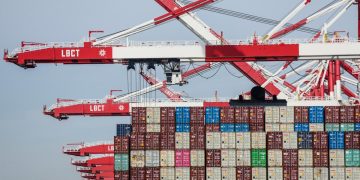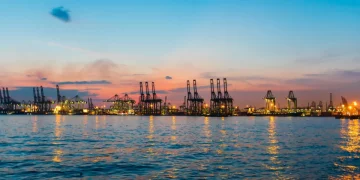In recent years, Asia-Pacific has become one of the most dynamic regions globally, with several countries undergoing significant economic reforms. From China’s shift towards a market economy to India’s push for innovation and infrastructure development, these reforms have reshaped the landscape of economic opportunity in the region. As a result, European investors are now exploring new avenues for investment in Asia, looking to capitalize on the growth potential in countries like China, India, and other rapidly transforming markets. This article examines how economic reforms in Asia-Pacific are influencing European investment strategies and market confidence, and how European investors can seize the opportunities arising from the opening of these markets.
The Economic Reforms in Asia-Pacific
Asia-Pacific countries have been at the forefront of transformative economic reforms, each country embarking on a unique path towards modernization, liberalization, and sustainable growth. In China, economic reforms initiated in the late 20th century have evolved, with the country moving towards a more market-oriented economy while maintaining state control in key sectors. Policies such as the Belt and Road Initiative (BRI) have also provided infrastructure development opportunities across the region, benefiting both Asian and European economies.
India, on the other hand, has undertaken significant reforms under the leadership of Narendra Modi, including the implementation of Goods and Services Tax (GST), which simplified the country’s complex tax system, and initiatives like “Make in India” aimed at boosting manufacturing. The government’s increased focus on infrastructure and digital transformation also creates a fertile environment for foreign investment.
Other countries, like Indonesia, Vietnam, and Malaysia, have similarly introduced policies to foster economic growth through industrialization, privatization of state-owned enterprises, and the improvement of governance structures. These nations offer immense potential to European investors as they open up new sectors such as technology, finance, renewable energy, and consumer goods.
Shifting European Investment Strategies
The economic reforms in Asia-Pacific are causing a shift in European investment strategies. Historically, European investments in Asia were concentrated in a handful of countries with stable, developed markets such as Japan and South Korea. However, as more countries in the region open up their markets and introduce investor-friendly policies, European investors are diversifying their portfolios and becoming increasingly active in emerging markets like China and India.
One of the key trends observed is the growing interest in China’s technology and e-commerce sectors. China’s market reforms have made it one of the largest and fastest-growing consumer markets in the world. Companies such as Alibaba, Tencent, and JD.com have attracted billions in foreign investment, and many European investors see these companies as part of a strategic long-term growth plan. As China continues to strengthen its intellectual property laws and support for innovation, European investors are more confident in entering the Chinese market.
Similarly, India’s rapidly growing middle class and its expanding digital economy have drawn significant attention from European investors. With a population of over 1.4 billion, India is an attractive market for sectors such as fintech, e-commerce, and clean energy. The Indian government’s push towards economic modernization and infrastructure development presents an exciting opportunity for European investors to partner with local companies and benefit from the country’s long-term growth trajectory.
In Southeast Asia, countries like Vietnam and Indonesia have emerged as key investment destinations. The region offers a combination of low labor costs, a burgeoning middle class, and strategic location for access to both Asian and European markets. The rise of the digital economy in Southeast Asia, driven by increased smartphone penetration and internet access, is also attracting European investment in tech-driven businesses.
Opportunities for European Investors in China
China remains one of the largest economies in the world, and despite its challenges, it presents considerable opportunities for European investors. The Chinese government has increasingly opened up various sectors, including finance, healthcare, technology, and consumer goods, to foreign investors.
The financial sector, in particular, has been a focus of China’s reforms. Policies such as the opening of the banking sector to foreign ownership, the inclusion of the Chinese yuan in the International Monetary Fund’s Special Drawing Rights basket, and the creation of the Shanghai Free-Trade Zone have enhanced China’s appeal as an investment destination. European financial institutions have taken advantage of these reforms, expanding their operations in China and building partnerships with local firms.
In addition, China’s push towards innovation and sustainability presents new avenues for investment. The government has emphasized green development, providing a significant opportunity for European investors in the renewable energy, electric vehicle (EV), and technology sectors. For example, companies involved in solar energy, wind energy, and EV infrastructure are well-positioned to benefit from China’s ambitious environmental goals.
Furthermore, China’s growing middle class and consumption-driven economy make it an attractive market for European companies in the luxury, consumer goods, and fashion industries. The digital economy, including e-commerce platforms, digital payments, and online entertainment, has also seen explosive growth, creating investment opportunities for European businesses looking to tap into China’s expanding online market.

Opportunities for European Investors in India
India, with its large population, rapid urbanization, and growing technological infrastructure, offers a wide array of opportunities for European investors. The Indian government has introduced numerous reforms aimed at boosting economic growth and attracting foreign investment. These include the Goods and Services Tax (GST) and labor market reforms, which have improved the ease of doing business in the country.
One of the most promising sectors for European investors is technology. India’s IT industry is one of the largest and fastest-growing in the world, with strong expertise in software development, AI, and cybersecurity. European investors looking to expand their presence in the digital world are increasingly turning to India for partnerships and collaborations. The rise of India’s startup ecosystem also presents investment opportunities, particularly in fintech, e-commerce, and edtech.
Additionally, India’s push for infrastructure development, including investments in transportation, smart cities, and renewable energy, is creating new opportunities for European investors. The government’s focus on clean energy, electric mobility, and sustainable development aligns well with European investors’ interests in green investments. European companies with expertise in energy efficiency and renewable technologies can play a significant role in supporting India’s transition to a more sustainable energy future.
Seizing Opportunities in Other Emerging Markets
Apart from China and India, several other countries in the Asia-Pacific region are experiencing substantial economic reforms that present investment opportunities for European companies. For example, Southeast Asia, with its young population and growing middle class, has become an increasingly attractive destination for European investors.
Vietnam, in particular, has seen rapid economic growth driven by its manufacturing sector and export-oriented economy. The government has been actively pursuing reforms to streamline regulations and improve the investment climate, and European companies are increasingly viewing Vietnam as a viable manufacturing hub. The country’s commitment to green energy and sustainability is also attracting European investment in renewable energy and energy-efficient technologies.
Indonesia, with its large consumer market and rich natural resources, is another key investment destination. The government’s efforts to modernize infrastructure, improve regulatory frameworks, and promote foreign investment make it an appealing choice for European companies. The rise of Indonesia’s digital economy also offers significant investment potential in sectors such as e-commerce, fintech, and digital payments.
Conclusion
The economic reforms in Asia-Pacific have ushered in a new era of investment opportunities for European companies. From China’s burgeoning technology and financial sectors to India’s infrastructure and renewable energy markets, the potential for growth in the region is vast. European investors, with their expertise in finance, technology, and sustainability, are well-positioned to take advantage of the opportunities arising from these reforms.
As the region continues to open up its markets, European companies must remain agile and proactive in identifying sectors and countries with the most potential for long-term growth. By forming strategic partnerships, investing in emerging technologies, and embracing sustainability, European investors can capitalize on the opportunities presented by Asia-Pacific’s economic transformation.






























